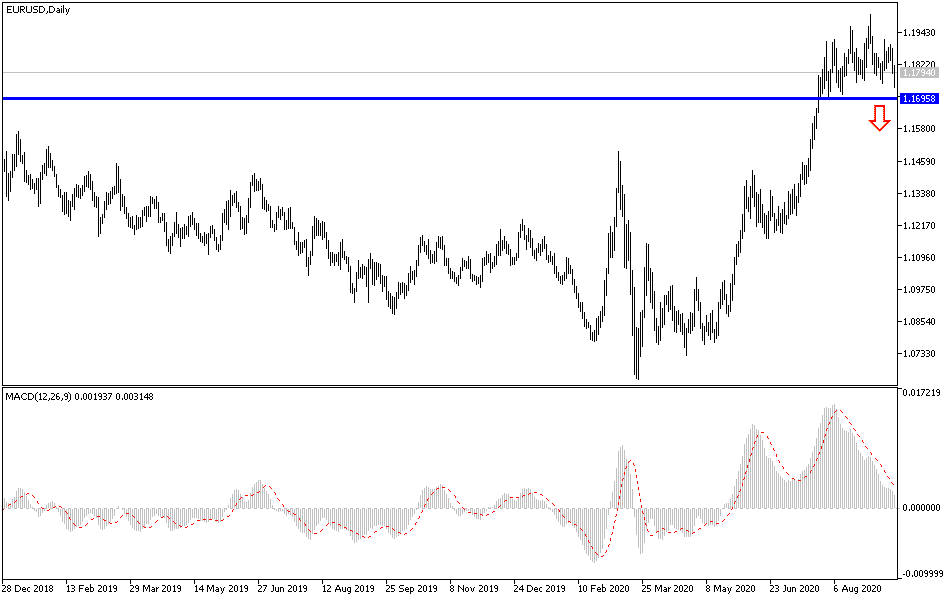Since the beginning of Thursday’s trading, the price of the EUR/USD pair has been suffering from a strong downward momentum that pushed it towards the 1.1736 support, the lowest in a month, before settling around 1.1770 at the time of writing, and before the announcement of the Eurozone inflation figures. The sell-off in the pair increased despite the US Federal Reserve’s announcement yesterday that US interest rates will likely remain at zero at least until 2023 and perhaps longer. The Federal Reserve left the benchmark interest rate unchanged at nearly zero, which has been maintained since the COVID-19 pandemic spread in March. The interest rate affects borrowing costs for home buyers, credit card users and businesses. Policymakers in the US central bank hope that a prolonged period of low interest rates will encourage more borrowing and spending, although their policy also carries the risk of an inflationary bubble in stocks or other financial assets.
Despite the current decline, analysts at Westpac believe that the single European currency has not been "overvalued" so far and that the European Central Bank (ECB) concerns about recent gains may be misplaced. The Euro lagged behind other major currencies in the rally against the dollar on Wednesday, which led to a rise in the EUR/USD, accompanied by declines in the Euro against other currencies, including other low-yielding currencies such as the Japanese yen in addition to more risky currencies such as the British pound, which was affected recently and strongly by concern about the future of Brexit.
The Euro gave up its gains against the rest of the currencies since the European Central Bank began to express its concern about the rise in the weighted exchange rate on trade in the Eurozone, and the latest concern came from the chief economist at the European Central Bank, Philip Lin, who contradicted the lukewarm reaction of the Governor of the Bank Christine Lagarde regarding the currency rate. Lin wrote in a blog last Friday that "the volume of an upward revision of core inflation has eased considerably due to the appreciation of the Euro," before saying that the bank will continue to carefully evaluate information from the economy "including developments in the exchange rate."
A stronger Euro threatens to lower import and consumer prices in an economy where inflationary pressures have been insufficient for a long time.
The EUR/USD pair has gained more than 12% since hitting a bottom in March, partly supported by positive steps towards financial solidarity in the Eurozone. However, the EUR/USD pair is still undervalued and prone to further rise, and the European Central Bank's Coordinated Competitiveness Index (based on consumer prices) indicates that the real effective exchange rate for the Euro could rise by roughly 4% before cancelling Eurozone price and more competitive cost versus its 19 largest trading partners. Meanwhile, the Euro’s appreciation does not appear to be an immediate macroeconomic concern for the European Central Bank.
According to the technical analysis of the pair: The recent drop in the EUR/USD represents an opportunity to consider buying again, and the support levels at 1.1735, 1.1680 and 1.1600 may be the most appropriate ones to do so because they are levels that confirm that technical indicators reached oversold areas. Buying would be the best fit with the European Central Bank ignoring in its recent meeting the strength of the Euro in the forex currency exchange market. On the upside, as I expected before, stability above the 1.1900 resistance will remain an important factor for bulls to control performance for a longer period.
As for the economic calendar data today: From the Eurozone, the consumer price index will be announced. From the United States, reading of the Philadelphia industrial index, the unemployed claims, building permits, and the housing starts data will be released.

